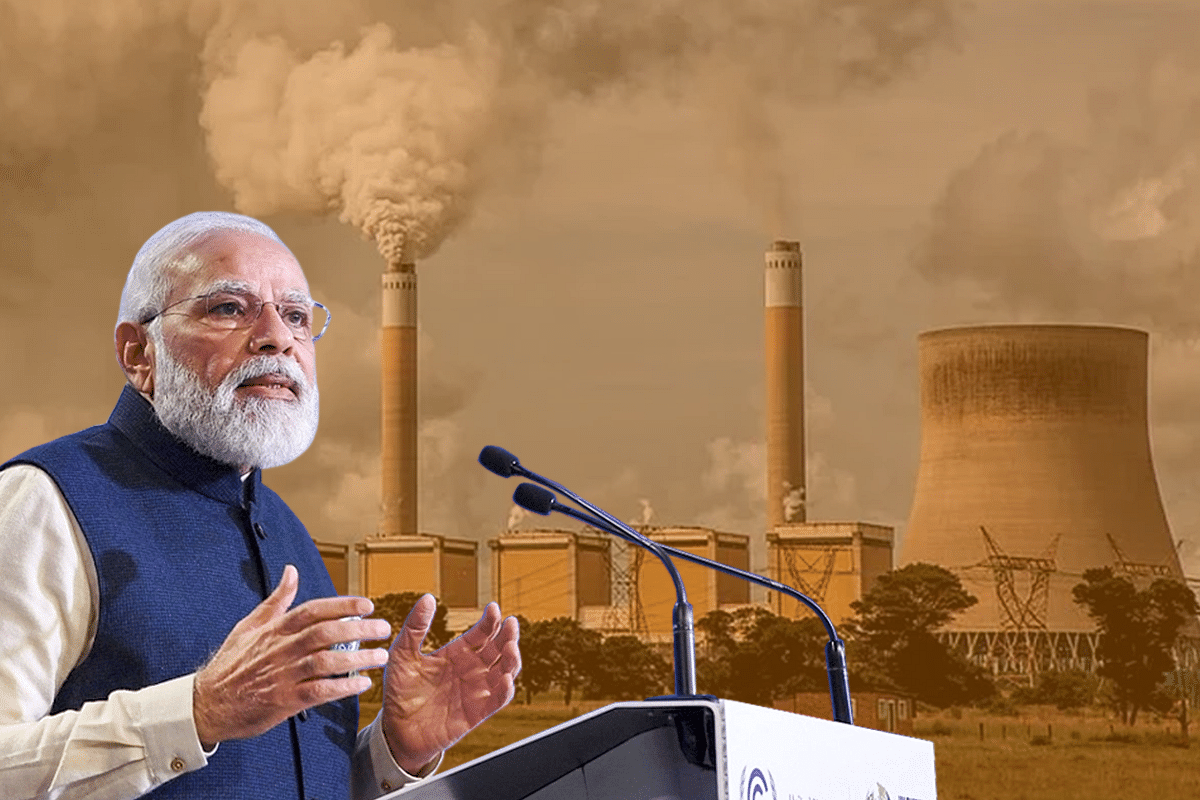World
India At COP26: Respecting What's Pragmatic; Pursuing What's Ideal
- A fresh emphasis on going electric, coupled with a push to boost nuclear power generation, means that India is charting a course through the climate change crisis, by combining a pragmatism grounded in reality, with cost effective intent.

Prime Minister Narendra Modi
The Indian government’s participation in the recently-concluded COP26 conference, in Glasgow, offers insights into how our policy makers are judiciously advancing towards a cleaner environment.
The crux of this United Nations conference on climate change hinged on prospective timeframes, for countries to reduce net greenhouse gas emissions to zero, and for the removal of coal from their energy mix.
A few countries pledged to stop using coal to generate electricity. A few committed to reducing emissions soon. Funding to assist developing nations, to make the transition to a less-polluted world, was agreed upon in principle.
India set its net-zero target at 2070, and declined to commit to cutting out coal. Both were pragmatic decisions, as our calculations show, and have to be analysed against ground realities if inferences are to be logical.
Any energy matrix has two parts — production (or generation), and consumption; both cause pollutant emissions, meaning that gases like carbon dioxide are released in the manufacture of electricity, and in the combustion of fuels for machines to do work.
India’s current energy mix, or its power generation by fuel source, is given in a pie chart below:
As we can see, the bulk of our power is generated by coal. This is how it has been, this is how it will be for some decades to come, and this is why India was in no position to commit to excluding coal from its energy mix.
Thus we see that be it production or consumption, coal constitutes a significant portion of both our energy and emissions baskets.
The red dashed line in Chart 3 above represents the trend of the period 2008 to 2013. The black dashed line is for the period 2015-2020. As we can see, the slope of the black line is distinctly less than that of the red line, meaning that the rate of emissions has reduced since 2015.
Looking forward, there are two allied policy aspects which the government is also working on, which merit some explanation in context if their significance is to be adequately grasped. One is reducing emissions from the burning of fuel by engines, and the other is reducing emissions from the generation of electricity by coal.
In 2020, coal constituted over 70 per cent of the fuel source for energy generation, and 55 per cent of energy consumption. Oil, on the other hand, constituted only 0.3 per cent of total generation, but 28 per cent of energy consumption. Bearing in mind that both generation and consumption create emissions, the inference from these numbers has significant policy implications: even if the oil component of consumption were reduced to near zero, by a revolutionary transition from the combustion engine to electric vehicles and machines, the bulk of the emissions would continue to come from coal.
In policy terms, that means the government’s efforts to promote electric vehicles, as it has in recent years, is but a subsidiary component of our efforts to achieve a cleaner environment. The real change will come only when coal is phased out from our energy mix.
The manner of that phasing out is a generational change which is contingent on the coal component of our mix being replaced largely by nuclear energy, and more substantially, by renewable sources. It will take decades to be put into effect.
The biggest moves, though, have been in the nuclear energy sector. The Nuclear Power Corporation of India announced last year that it would set up four additional reactors. Ten reactors are in the process of being completed and commissioned. Atomic Energy Minister, Jitendra Singh, announced in July of this year that financial and administrative sanctions for 10 new pressurised heavy water reactors have been granted, and would be set up before the end of the decade. He also formally informed a visiting American delegation in September, that a larger number of nuclear power plants would be sanctioned in due course.
It is early days yet, for a nation historically resigned to nuclear energy apathy and emission indifference, but the fresh emphasis on going electric, coupled with a push to boost nuclear power generation, means that India is charting a course through the climate change crisis, by combining a pragmatism grounded in reality, with cost effective intent.
All data from bp.com
Introducing ElectionsHQ + 50 Ground Reports Project
The 2024 elections might seem easy to guess, but there are some important questions that shouldn't be missed.
Do freebies still sway voters? Do people prioritise infrastructure when voting? How will Punjab vote?
The answers to these questions provide great insights into where we, as a country, are headed in the years to come.
Swarajya is starting a project with an aim to do 50 solid ground stories and a smart commentary service on WhatsApp, a one-of-a-kind. We'd love your support during this election season.
Click below to contribute.
Latest